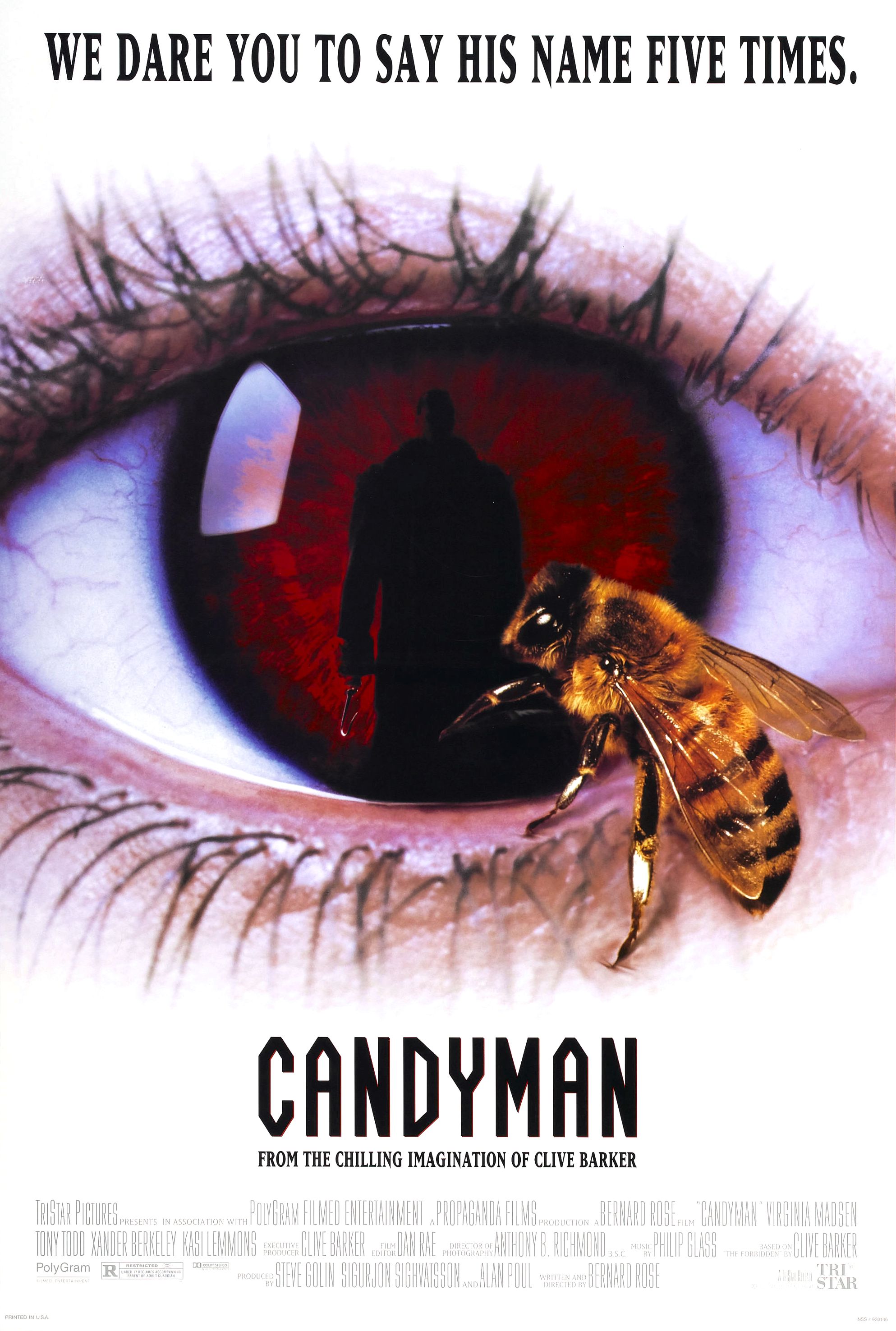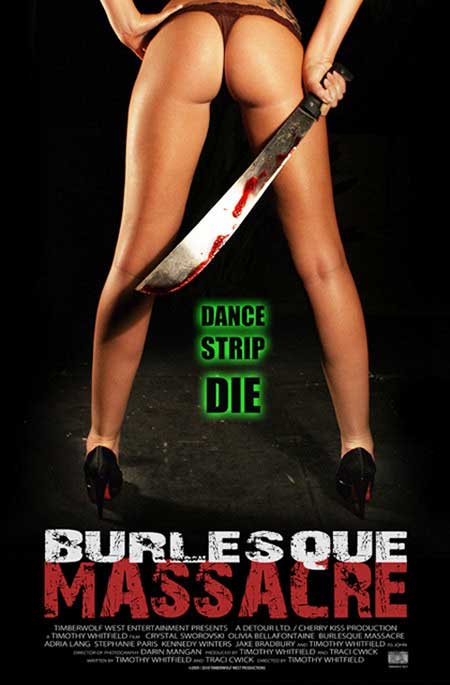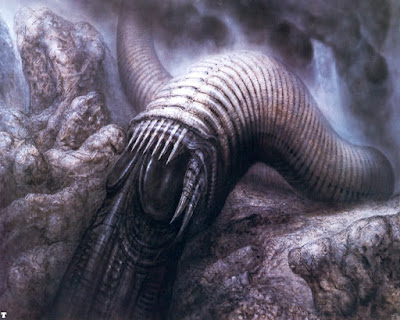Copyright 2019 by Gary L. Pullman
Although they are not to
everyone's taste, perhaps, horror movie posters are works of art.
To promote their films,
such posters use a variety of visual and linguistic techniques. The
latter often include the movie's title, a caption, a pun or another
type of play on words, an allusion, a symbol, or a metaphor. The
former exclude almost nothing.
Today's post focuses on
horror movie posters' use of body parts. Specifically, we're
concerned with eyes, mouths, breasts, buttocks, hands, and female
genitals. (Ears, noses, feet, and phalli don't appear to play much,
if any, part in horror movie poster art.)
Perhaps, in a future post,
we'll consider heads (decapitated, of course), arms and legs
(dismembered, naturally), and internal organs (eviscerated,
obviously).
Let's start at the top and
work our way down.
The Eyes Have
It
Eyes are
featured in quite a few horror movie posters.
Such posters
feature wide eyes suggestive of shock or terror; reptilian eyes with
slit pupils (Beneath Loch Ness);
the whites of eyes, sans irises (The Return);
and an eye in which fire (and a fiery cross) burns (The
Visitation).
In some such
posters, eyes are replaced with such substitutes as screaming mouths
(One Missed Call), hands
(Oculus), and treetops
(Cabin Fever).
Live
creatures or objects exit some eyes: a hand (The Eye)
and blood (The Eye).
In other images, something enters
the eye or is about to do so: the edge of a single-edge razor blade
(Would You Rather?)
and a yellow jacket (Candyman).
Eyes
are displaced (relocated) to incongruous sites in still other horror
movie posters (one peeks out between the lips of a mouth in the
poster for The Theater Bizarre,
or are equipped with the body parts of another species (a gigantic
eye becomes a tentacled monster in the poster promoting The
Crawling Eye).
As
mirrors, eyes reflect the threat or a victim that a character
(perhaps him- or herself a potential victim) sees, thus allowing the
audience a glimpse at the menace as well: Hipnoz,
The Texas Chainsaw Massacre,
The Eye, The Skeleton Key.
Five-pointed
stars, or pentagrams, are carved into the case of a victim in the
Starry Eyes movie poster—right over her eyes.
There
are as many ways to include images of eyes in horror movie posters as
there are ways to imagine such use, but such devices as spotlighting,
substitution, the egress and ingress of foreign objects,
displacement, reflection, and mutilation are certainly some of the
horrific techniques that make the eyes emblems of fear, especially in
movies that feature body horror.
Getting
Mouthy
A
straight-jacketed corpse is shows inside a screaming mouth (In
the Mouth of Madness). Bestial
lips frame drooling teeth and fangs in The Funhouse
movie poster. At the end of a bent wrist, a hand claws its way
through a gaping mouth in the poster for The Possession.
A girl's mouth is missing in Silent Hill's
poster, and a woman's mouth is obstructed by a locked metal band in
another of Silent Scream's
posters.
Like
eyes, which provide the capability of sight, mouths are useful to our
survival. They help us to eat and to communicate; they also allow us
to sound the alarm, to scream—unless they are missing or muffled
with a gag.
Keeping
Abreast of Things
Most
horror movie posters eschew nudity. Instead, breasts, buttocks, and
genitals are partially revealed (and, thus, partially concealed).
Nevertheless, an emphasis on them, whether as a result of partial
nudity or otherwise, makes them the center of attention in the poster
and in the viewers' perceptions.
Bikinis
are revealing, and their brief tops expose quite a bit of cleavage in
Blood Night's
poster—so much so that viewers, especially males, might not see the
hatchet in her right hand and the decapitated man's head that she
holds by its hair in her right hand as she trudges through a forest
of leafless trees.
A
rare pair of bare breasts do appear in the poster for Hostel
II''s poster, but they aren't
enough to deflect attention from the decapitated head the topless
woman holds, which is, perhaps, her own: she is not shown above the
neck.
The
Machete Kills poster
displays one of the more creative uses of breasts. The woman it
features (actress Sophia Vergara as Desdemona) has twin machine guns
strapped to her chest, the domes from which the firing barrels
protrude covering her breasts.
A
number of other horror movie posters feature breasts. Apart from
those in the Machete Kills
poster, though, most of these particular body parts, ironically
enough, seem to have the purpose of either attracting attention to
themselves or of deflecting attention away from something or someone
else b, well, drawing attention to themselves.
Bottoms
Up
Sexologist
Alfred Kinsey suggests that women's buttocks, not their beasts, are
mainly what attract the male of the species, and some social
scientists claim that men's obsession with breasts stems from the
resemblance of breasts to buttocks. Be that as it may, more horror
movie posters seem to feature breasts than buttocks.
Still,
such posters do present posteriors as well. The poster for Peelers,
which shows a woman in high heels and thong panties lying on her
right side, facing forward, away from the viewer, is an example. So
arresting is the image that many might not see her severed leg
hanging from the pole she was apparently dancing around (or hanging
from) before she lost her gam. If so, it would seem that the
buttocks, in this poster, serves the same purpose that the bare
breasts exhibited in the Hostel II
poster fulfills, diverting viewers' attention from the horrific image
of the severed leg by focusing their attention, initially, at least,
on the erotic image of the woman's naked bottom.
Burlesque
Massacre's poster shows a woman
from the rear. She wears a black thong and black high heels. Her legs
are spread. Her left hand rests upon her left hip. Her left hand is
on her right hip, but, while the thumb and fingers of her left hand
hold her left hip, her right hand lies along her right hip, its
fingers curled around the handle of the bloody sword she holds. Like
the figure in Peelers,
this woman is also an erotic dancer. Although no pole is shown, the
caption makes her vocation clear: “Dance. Strip. Die.”
In
general, bare buttocks seem to accomplish the same tasks as bare or
partially bare breasts, either diverting attention away from
something or someone else or focusing attention on themselves. By
being presented first with the erotic and then with the horrific, the
latter is enhanced, seeming all the more horrid than it might have
appeared had it not been preceded by images associated with lust,
rather than with horror.
Hands
Down
The
fingers of a gigantic hand curl toward the silhouette of a male
figure standing on its palm (The Hand).
A man stares at his raised hands, the fingers of which curl inward
(The Hands of Orlac).
A hand reaches out from the soil of a grave marked with a headstone
bearing a word of advice to the viewer: “Before you are covered
with the last shovelful of dirt . . . Be sure you are really dead”
(Mortuary). Hands
growing out of a woman's face replace the eyes they would have
covered, were they not already gone (Oculus).
A zombie approaches the viewer, right hand raised and ready; right
hand extended, as if to seize a victim—the viewer him- or herself.
The
hand or hands appear in plenty of other horror movie posters, too,
but most of them are variations of the images cited, suggesting
menace or escape—or an escaping menace.
Private
Parts
Posters
for Teeth, a
comedy-horror movie featuring a young woman with a vagina dentata (a
vagina with teeth—and sharp ones, at that) never show the female
sexual organ itself—this seems taboo even for the horror genre,
but, instead, suggests the vagina various creative ways, through the
use of symbolic cover-ups.
One
poster shows an X-ray photograph of a human torso. Located where the
patient's sex would be are the two letters, mirror images of “E,”
the horizontal bars of which end in sharp points, resembling fangs.
Together, the facing letters are supposed to represent the vagina and
its teeth.
In
another poster for this film, a woman lies supine in a bathtub, her
legs parted. Rose petals float on the sudsy water. Below the surface,
in swirling, blood-red water, a rose is shown from above, the white
thorns among its soft petals suggesting the teeth with which the rose
(symbolizing the vagina) is armed.
A
third poster for this movie shows a young woman standing, her left
leg turned in against her right leg. She wears a yellow short with
orange bands around its neck and the ends of its short sleeves. The
short bears a message: “WARNING: Sex changes everything.”
Wide-eyes, lower lip askew, she stares at the viewer, as if shocked.
Her pubic lower abdomen, pubic area, and upper thighs are covered
with a scalloped-edge circle identifying the film's producer.
Much
as the fig leaf has come to represent the censorship of phalli in
painting and sculpture, the letters, the rose, and a scallop-edge
circle fulfill the same function in these posters. However, by
concealing the vagina, these cover ups also tend to focus viewers'
attention on the very
private part they conceal.
In
analyzing what additional meanings eyes, mouths, breasts, buttocks,
hands, and female genitals may have, it is necessary to investigate,
identify, and evaluate the cultural significance of such body parts.
To start, a dream dictionary might impart some suggestions. For
example, concerning the mouth's symbolic significance, according to
one source,
Your
mouth is a fundamental part of life. It takes things in such as food,
pleasure or even pain. Basically the mouth is a pleasure area, but it
is also the way you express pleasure or pain, as with smiling, crying
or grimacing. So the mouth is a way you communicate as well as
satisfy yourself or gain your needs. As an organ of expression
the mouth can also give thanks for life and utters beauty in words or
sounds. This is a way you can uplift the dark things in you and
transform them.
















































